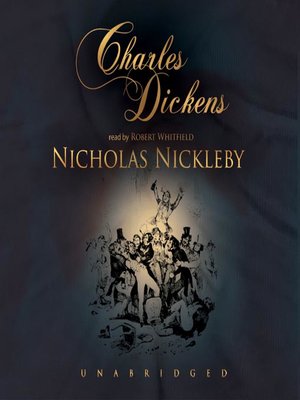
The scene shifts to the office of the children’s uncle, Ralph Nickleby, in Golden Square, where readers first meet Ralph’s assistant, Newman Noggs, another former gentleman who was ruined through bad investments. He dies a broken man, leaving his wife and two children, Nicholas and Kate, penniless. Cold and miserly Ralph becomes a rich money-lender, while the kinder Nicholas remains poor, eventually investing badly in the stock market and losing what little he has. He buys a farm and raises two sons, Nicholas and Ralph. Drawing on the critical theory of Walter Benjamin, Freud, Nietzsche and Marx, and with close detailed readings of such well-known figures as Mrs Nickleby, Vincent Crummles and his theatrical troupe, and Mr Mantalini, and attention to Dickens’s description, imagery, irony, and sense of the singular, this book is a major study which will help in the revaluation of Dickens’s early novels.Charles Dickens’ Nicholas Nickleby opens with Nicholas’s grandfather Godfrey Nickleby, who has been driven by poverty almost to the point of suicide, inheriting money from an uncle. It shows these traditions to be at the heart of London, and aims to illuminate a strand within Dickens’s thinking from first to last.



With chapters on the school-system that Dickens attacks, and its grotesque embodiment in Squeers, and with discussion of how the novel reshapes eighteenth century literary traditions, and such topics as the novel’s comedy, and the concept of the ‘humorist’ and ‘theatricality’ and its debt to Carlyle, the book delves into the way that the novel explores madness within the city in those whose lives have been fractured, or ruined, as so many have been, and considers the symptoms of hypocrisy in the lives of the oppressors and the oppressed alike taking hypocrisy as a Dickensian subject which deserves further examination.ĭickens, Nicholas Nickleby, and the Dance of Death explores ways in which Dickens draws on medieval and baroque traditions in how he analyses death and its grotesquerie, especially drawing on the visual tradition of the ‘dance of death’ which is referred to here and which is prevalent throughout Dickens’s novels. It concentrates on this theme in a way which continues from Oliver Twist, describing such oppression, and the resistance to it, in the language of melodrama, of parody and comedy.

Nicholas Nickleby deals with the abduction and destruction of children, often with the collusion of their parents. This study of Nicholas Nickleby takes the Dickens novel which is perhaps the least critically discussed, though it is very popular, and examines its appeal and its significance, and finds it one of the most rewarding and powerful of Dickens’s texts.


 0 kommentar(er)
0 kommentar(er)
